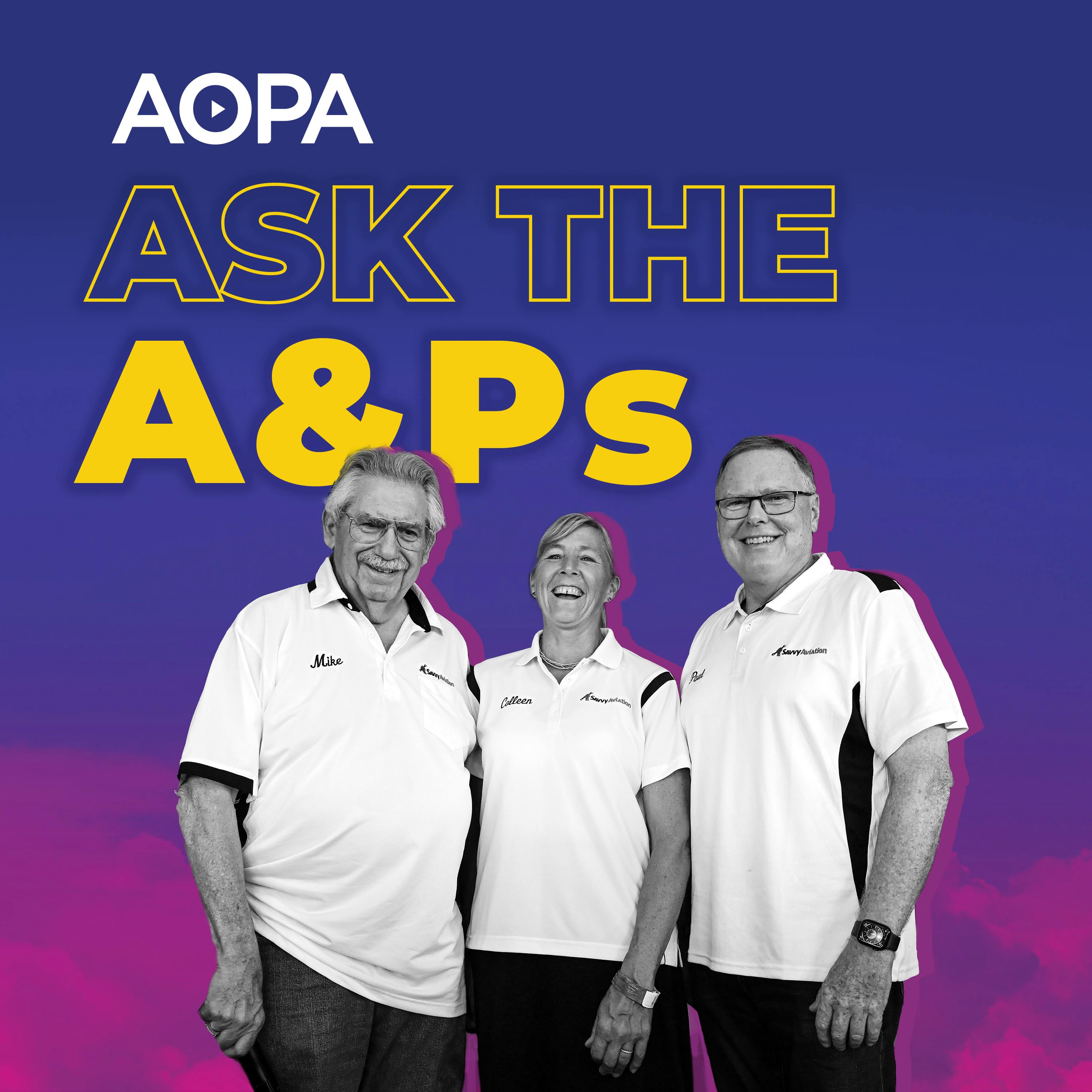My airplane is so clean you can eat off it
Description
How to start an airplane, whether or not to wash an airplane for an annual, flying through smoke, and high T**s are all on tap for this grab bag of an episode, as Mike, Paul, and Colleen take your toughest questions. Write to [email protected] for a chance to be on the show.
Tony owns a turbo Twin Comanche with 300 hours on the engines. He burns about 14 gallons per hour on takeoff, but he thinks he should be burning 16 gallons per hour. As a result, he gets high cylinder head temperatures quickly, and needs to reduce power. He also sees power surging on the ground when his engines are hot, but not cold. Paul thinks the fuel servos and engine-driven fuel pumps are both in question. Colleen recommends pulling one servo and sending it out, just to see if it makes a difference. Paul suggests maybe a different shop to see if he gets different results. He’s had many experiences where there’s a problem with a component that overhauling doesn’t fix, despite the overhaul facility saying there’s no issue.
Andy questions whether shops follow the regulation that requires an aircraft to be cleaned during an annual inspection. Apparently his shop said they will wipe off big globs of dirt, but don’t do a full cleaning. Paul said they definitely wash the airplane, but often it’s after the inspection is complete so they can see the various oil and grease patterns. The wash is complete, but basic. Really dirty airplanes are written up as a discrepancy so the owner can take care of it later.
Matt has a 210 and he’s worried about exceeding the turbine inlet temperature. They try to fly it below redline, but they exceed it easily and quickly on takeoff. They are hoping to more aggressively lean and take advantage of low CHTs. Mike said not to worry about going over the TIT redline for short periods. Redline on the turbocharger is meant to protect the turbine wheel because the blades can creep from centripetal force when they get too hot. But flying lean of peak is possible because TIT is often exceeded only briefly during the transition, and not when settled. He also suggested that unusual TIT numbers can be a result of improper mag timing.
Nathan is a flight instructor and wants to clear up the madness around starting carbureted small engines. He sees people use the primer, pump the throttle, and do all sort of other unusual things. He wants to know the right way to do it. Mike said that using the throttle, or using the accelerator pump, puts the fuel in the wrong place. He also thinks that if it’s possible, prime while you crank the engine for best efficiency. Paul said if the primer isn’t helping to start the engine, it’s quite possible the primer isn’t working. He finds a lot of the old primers are clogged, which leads to other techniques.
Erik has a question about how smoke impacts piston engines. With wildfires being more and more prevalent, whether or not to fly during wildfire season is a growing concern. Colleen said she sees increased dirt in her oil analysis, her air filter gets dirty, and the leading edges of her airplane get dirtier. But the hosts agree that it's generally not a concern, especially for brief periods.
More Episodes
Published 11/15/24
Lean of peak is causing odd vibrations in a Commander, and the hosts discuss proper troubleshooting. Plus carb heat on the ground, dehydrators, and parts no longer manufactured. Email [email protected] for a chance to get on the show.
Full notes below.
Chip said his mechanic is concerned about...
Published 11/01/24
Rough idle, electronic ignition basics, airplanes to avoid (or not), and the difference between detonation and pre-ignition are on tap for this episode. Email us at [email protected] for a chance to get on the show.
Join the world's largest aviation community at aopa.org/join
Full notes...
Published 10/15/24


